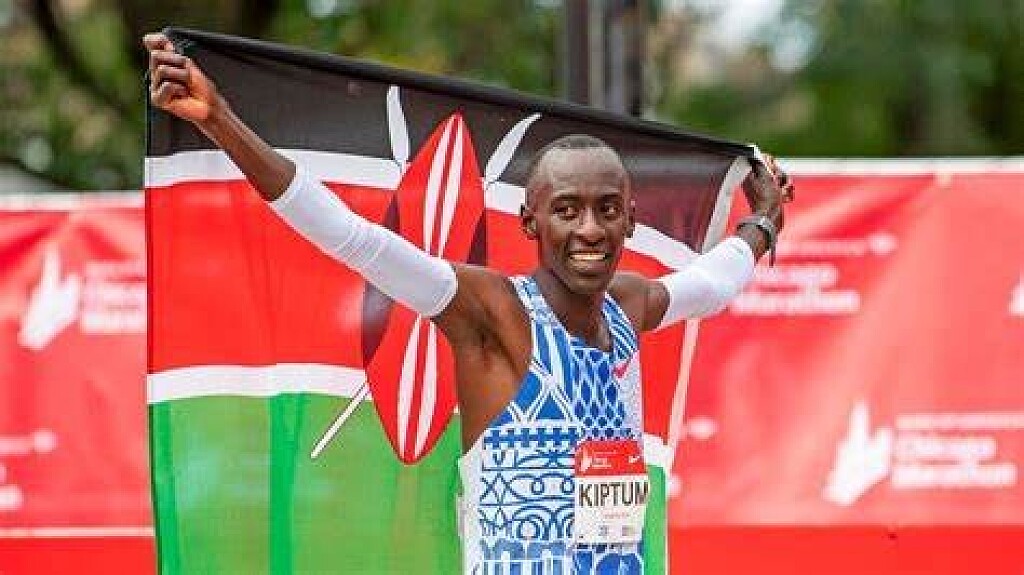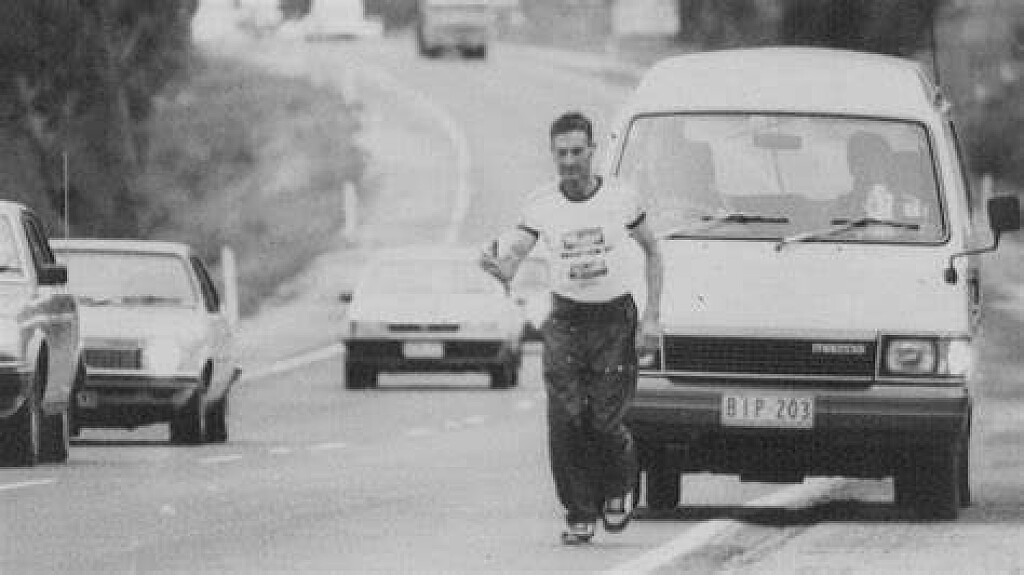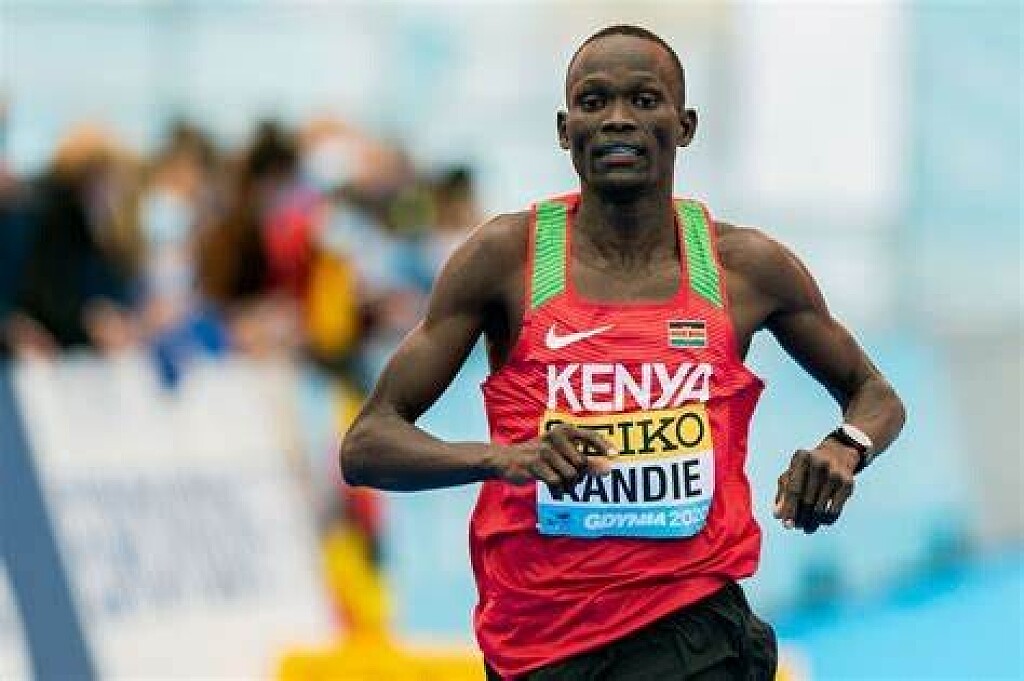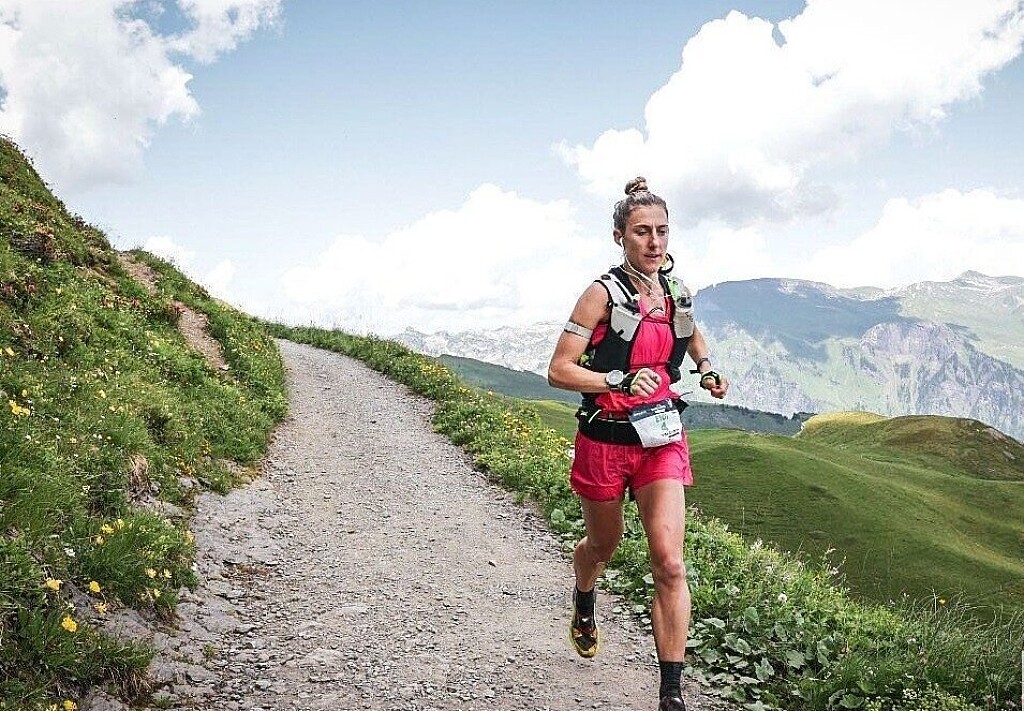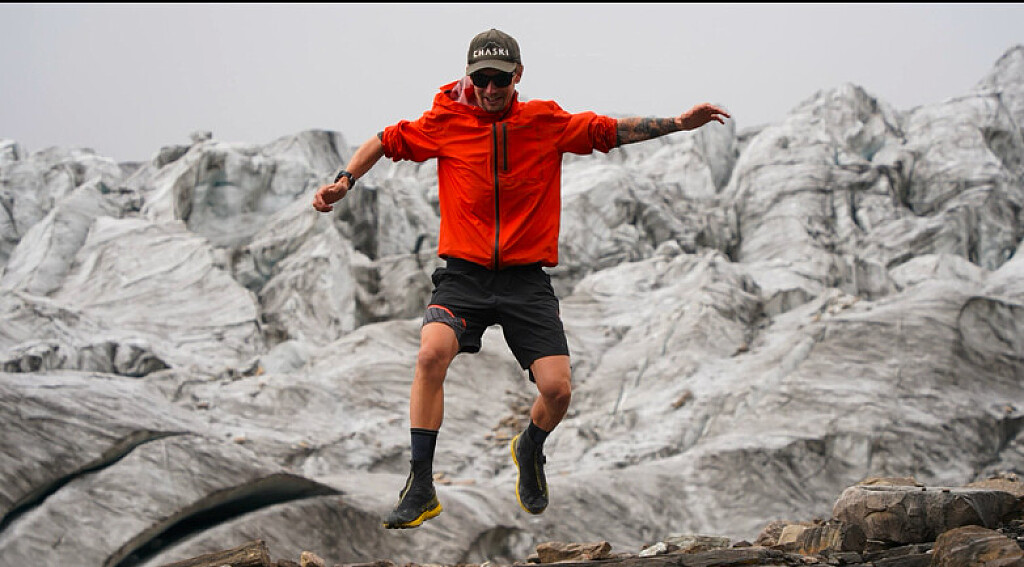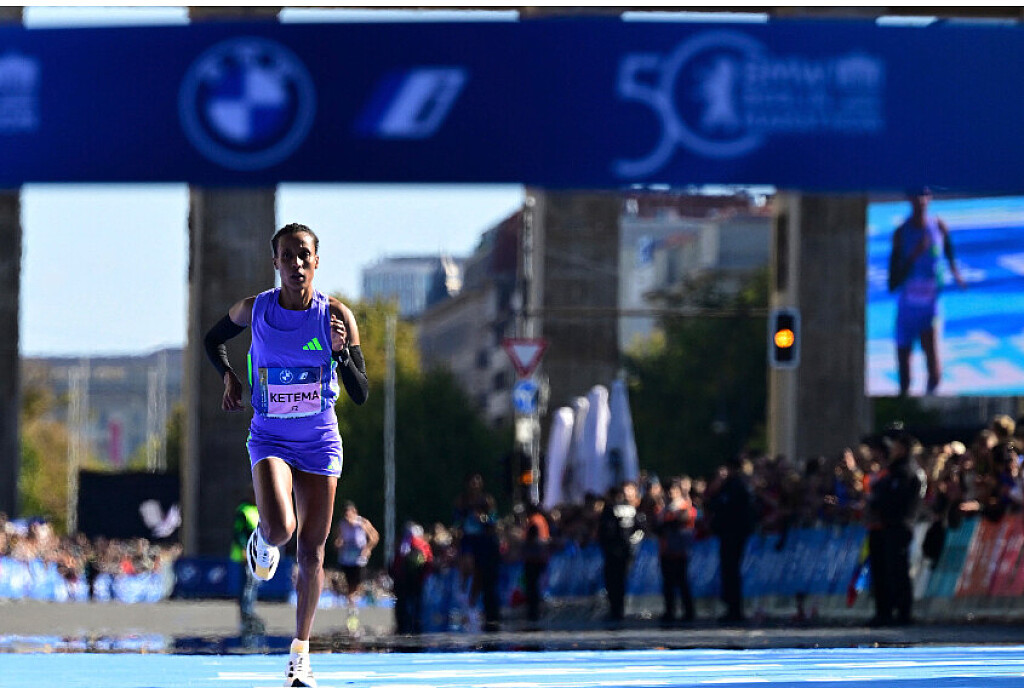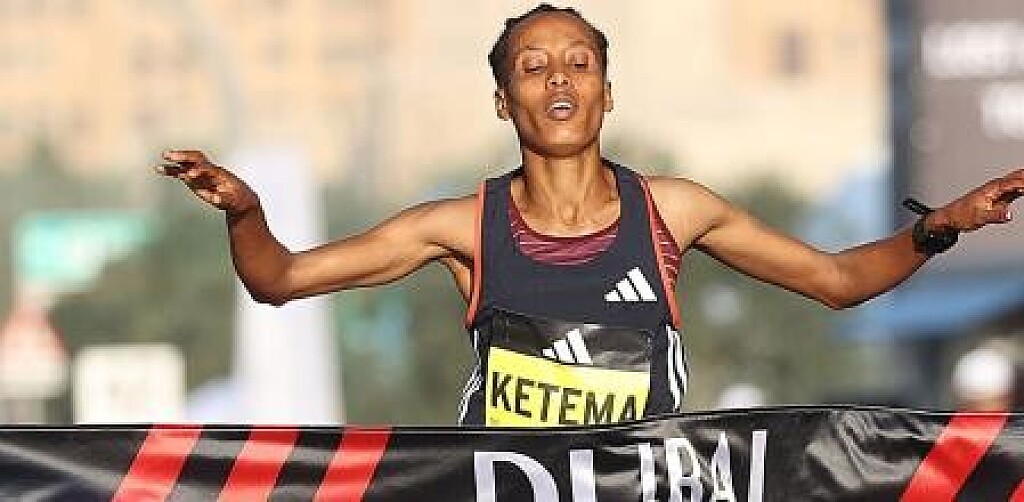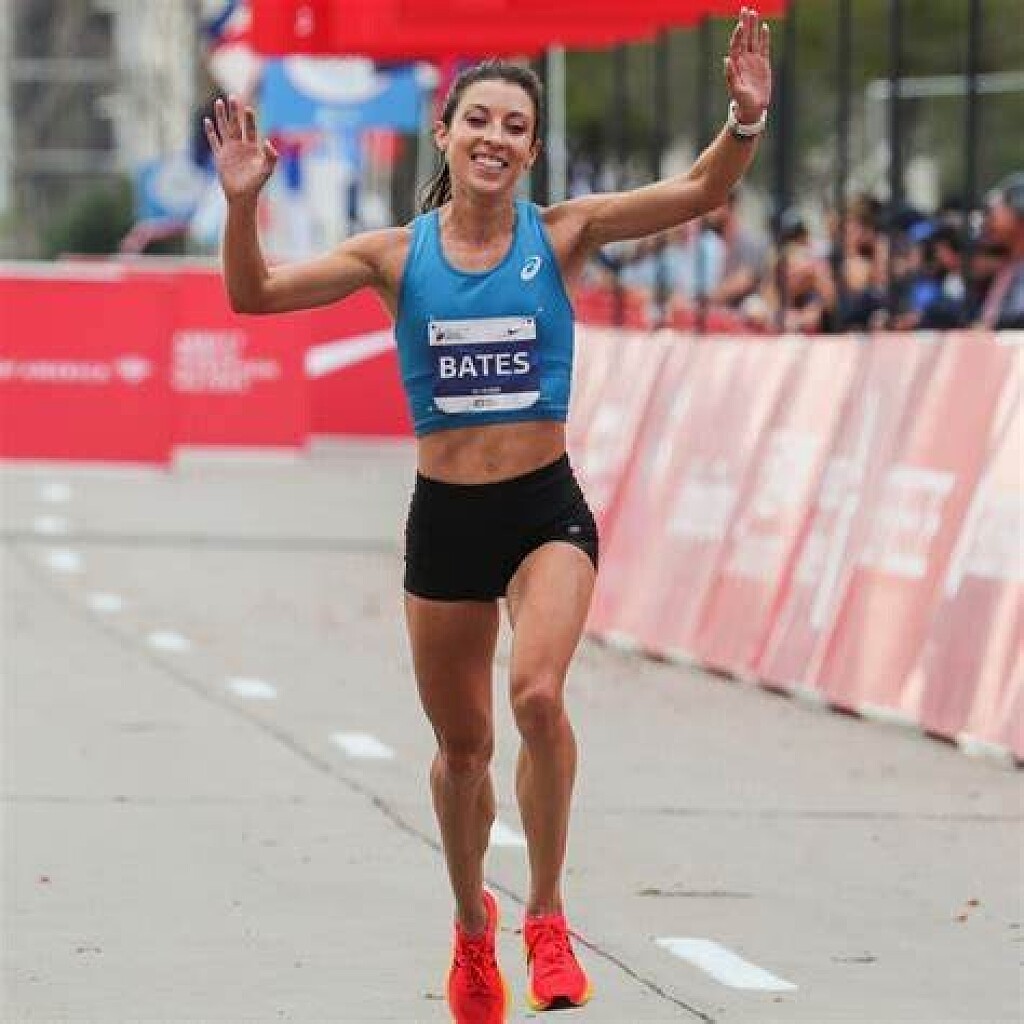Running News Daily
Top Ten Stories of the Week
10/5/2024
These are the top ten stories based on views over the last week.
Chicago Marathon plans to honor late record-holder Kiptum
The Chicago Marathon plans to honor the late Kenyan marathon runner Kelvin Kiptum at next month's race, a year after he smashed the men's world record in the Windy City.
Kiptum was aged only 23 when he put on a performance for the ages to break the tape in two hours and 35 seconds. He died in a car accident four months later, cutting short his promising career.
Organizers have planned a moment of silence at the starting line to honor Kiptum and a brief exhibit celebrating his career at the pre-race expo, with memorial stickers available for all participants.
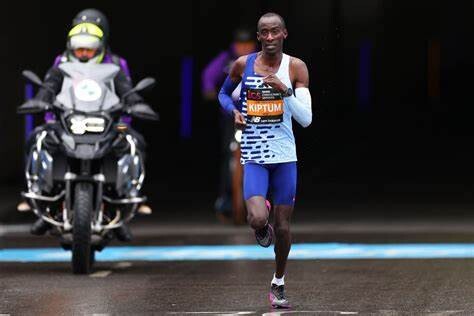
"He's still prevalent in everyone's thoughts," Race Director Carey Pinkowski told Reuters. "He's with us and it's our plan to celebrate his life."
While the Chicago race is known for its flat course and fast times - six world records have been set there - Kiptum's achievement nonetheless was astonishing as he became the first man to run a record-sanctioned marathon faster than 2:01.
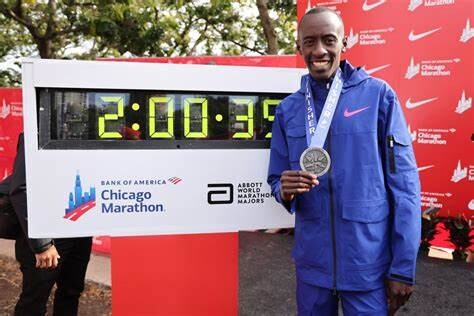
Pinkowski was at the finish when Kiptum crossed the line in Chicago and said the race was etched forever in his memory.
"I was so impressed by his biomechanics and his ability was just effortless, it was like something I've never seen before. And I've seen a lot of the greats," said Pinkowski.
It was the second of two major titles for Kiptum, who won in London in a course record of 2:01:25 earlier in 2023, and the Kenyan ran much of the second half of the Chicago marathon by himself, with the chasing pack well behind him.
"It was him against history, him against the stopwatch, him against the clock, and, he just ran," said Pinkowski. "I knew he was a magnificent athlete. In my opinion, the best I've ever seen."
The 2024 Chicago Marathon will take place on Oct. 13.
(09/28/24) Views: 224Amy Tennery
The Legend of Cliff Young: The potato farmer who miraculously won a 544-mile marathon at age 61
At the start of the 1983 Sydney to Melbourne Ultramarathon, Cliff Young quickly fell behind and seemed on track to finish last. But while the others stopped to sleep, Young kept running at his tortoise pace for five days straight — and won.
In 1983, a 61-year-old Australian potato farmer entered the first ultramarathon between Sydney and Melbourne. Few bet on the farmer winning the race.
Not only did Cliff Young have a strange, slow running stride resembling a shuffle, but he’s said to have shown up to the race wearing work boots and overalls. During the event itself, rather than wearing sleek running clothes like the other competitors, Young donned a cotton t-shirt and long trousers, explaining that it was important to reduce his risks of skin cancer.
But Young had a secret weapon.
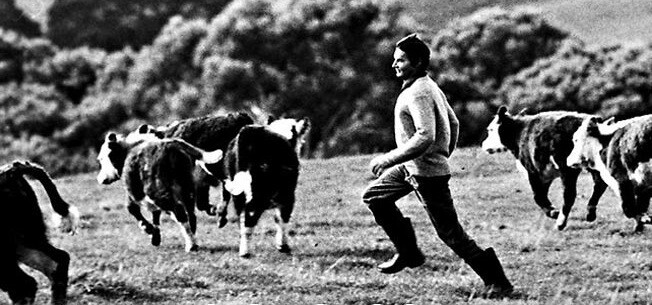
“I grew up on a farm where we couldn’t afford horses or tractors,” Young said in an interview, according to Adventure Journal. “And the whole time I was growing up, whenever the storms would roll in, I’d have to go out and round up the sheep. We had 2,000 sheep on 2,000 acres.”
Rounding up sheep gave Young a taste for long-distance running.
“Sometimes I would have to run those sheep for two or three days. It took a long time, but I’d always catch them. I believe I can run this race.”
In less than six days, Cliff Young ran 544 miles and won the ultramarathon — and broke the previous record by two whole days. His unorthodox style and surprising victory shocked the world. How did a 61-year-old farmer win one of the most challenging races in history?
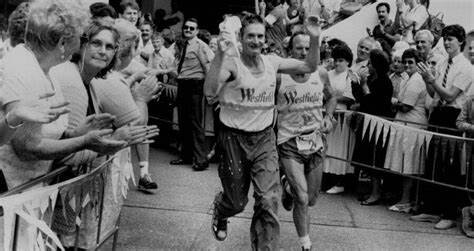
Cliff Young’s Real-Life Tortoise And The Hare Story
From the starting gun, it looked like Cliff Young would be at the back of the pack.
When the ultramarathoners left Sydney, Young quickly fell behind. With his slow signature shuffle, Young could barely match the pace of the other racers. But everything changed the first night of the race.
Although he’d fallen far behind the other runners at the end of the first day, by dawn on the second day Young had a massive lead. The Sydney Morning Herald reports that that was thanks to Young’s trainer, Wally Zeuschner. Known for his tough tactics, Zeuschner reportedly told one athlete that he could take a break when his eyes started bleeding.
In fact, Zeuschner’s eyes helped Cliff Young win the ultramarathon. Young turned in to sleep the first night and Zeuschner set the alarm. But because of his poor eyesight, Young’s trainer set the alarm for 2 a.m., several hours earlier than the planned wakeup call.
When the alarm rang, Young leaped up and began running. It took the groggy racer some time to realize that it was still dark.
Those hours of early morning running put Cliff Young at the head of the pack. And Young turned that accidental advantage into a strategy. Instead of stopping to sleep at night, he kept running.
“I’m just an old tortoise,” Young told reporters during the race, according to The Age. “I have to keep going to stay in front.”
Cliff Young also had an unusual running style. The press dubbed it the “Young-Shuffle,” because Young seemed to shuffle rather than run.
But the shuffle-step gave Young a significant advantage during an ultramarathon. By conserving his energy, Young was able to run longer without rest. His shuffle was also more aerodynamic than other running styles, according to the Sydney Morning Herald.
Not long after the ultramarathon, other runners adopted Young’s signature style. In fact, three subsequent winners of the Sydney to Melbourne ultramarathon took first place using the Young-Shuffle, according to Elite Feet.
Fans and reporters tracked Cliff Young as he inched closer and closer to Melbourne. During days and nights of running, someone asked Young what he planned to do first when he reached the finish line.
“I’m going to the toilet first,” Young declared.
As the days passed, Young remained at the head of the pack. At dawn on the sixth day, Melbourne was in sight. But it would take Young several more hours of running to officially win the race.
When he reached Melbourne, Young barely stopped for the cameras — they had to wait outside while he went to the toilet.
Sharing The Prize Money
In the final leg of the ultramarathon, runner Joe Record thought he might catch Young. As reported by The Age, Record, 41 years old, boasted, “I think I can catch old Cliff. He says he’s a tortoise but I think the old bastard is a hare in disguise.”
But Cliff Young carried the day, reaching Melbourne in the record time of 5 days, 15 hours.
At the end of the race, Cliff Young walked away with $10,000 in prize money. Instead of keeping it for himself, he gave away most of the money to his competitors.
“Joe Record and I had a pact before we ran that if either of us won we would split the prize money between us,” Young told the New Vegetarian and Natural Health magazine in a 1997 interview. “I forgot about Joe and started giving it away left, right and center. I gave $4,000 away to the other runners.”
Luckily, Record didn’t mind when Young handed him $3,000.
Later, when asked about the highlight of the ultramarathon, Young said, “The prize money of ten thousand dollars! Now that’s a helluva lot of potatoes.”
The Legacy Of Cliff Young
When he won the first Sydney to Melbourne ultramarathon, Cliff Young became a hero in Australia. Suddenly, everyone wanted to know about the potato farmer who ran 544 miles.
Reporters pestered Young to learn more about his diet. An avid vegetarian, Young explained how eating grains and fruit powered his runs. “The secret to a long life is preserved pears and jogging,” Young told the Sydney Morning Herald. “It sure beats having a drink in the pub.”
Young also had advice for fellow older runners.
“Get out of your wheelchairs and start doing a few laps, if you can,” he told the New Vegetarian and Natural Health magazine. “If you don’t get any exercise your joints start seizing up like a rusty engine.”
Young never retired from running. He returned to the Sydney to Melbourne ultramarathon the next year, 1984, and came in 7th. In his 70s, Young attempted to run around all of Australia. He only stopped when his support crew member fell ill. In 2003, Cliff Young died at the age of 81.
Cliff Young inspired generations of runners. So did Kathrine Switzer, the first woman to run the Boston Marathon. And don’t forget to check out more uplifting stories from history.
(09/27/24) Views: 157
Genevieve Carlton, Maggie Donahue
The Strange Saga of Ultrarunner Camille Herron and Wikipedia
The husband of runner Camille Herron admitted to having altered the Wikipedia biographies of prominent ultrarunners. The revelation came after a Canadian journalist launched an investigation.
On September 24, Conor Holt, the husband and coach of American ultrarunner Camille Herron, admitted to altering the biographies of Herron, Courtney Dauwalter, Kilian Jornet, and other prominent runners on the website Wikipedia. Holt’s edits boosted his wife’s accolades but also downgraded those of the other prominent ultrarunners.
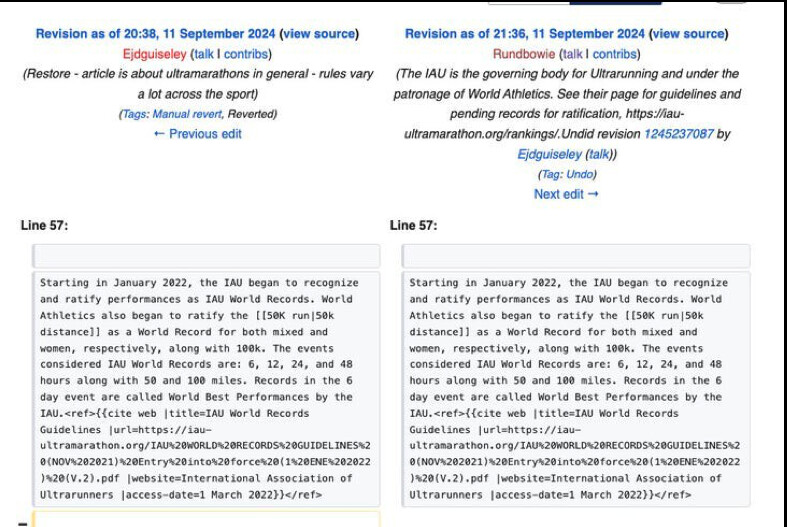
“Camille had nothing to do with this,” Holt wrote in an email sent to Outside and several running media websites. “I’m 100 percent responsible and apologize [to] any athletes affected by this and the wrong I did.”
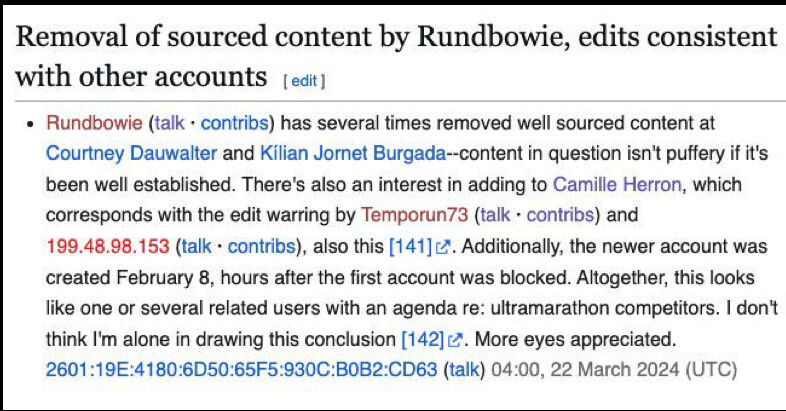
The confession brought some clarity to an Internet mystery that embroiled the running community for several days and sparked a flurry of chatter on social media and running forums. Herron, 42, is one of the most visible ultrarunners in the sport, and over the years she has won South Africa’s Comrades Marathon and also held world records in several different events, including the 48-hour and six-day durations. But the Wikipedia controversy led to swift consequences for Herron—her major sponsor, Lululemon, parted ways with her on Thursday morning.
The entire ordeal sprung from an investigation led by a Canadian journalist who spent more than a week following digital breadcrumbs on dark corners of
Marley Dickinson, a reporter for the website Canadian Running, began looking into the Wikipedia controversy in mid-September after receiving a tip from someone in the running community. The tipster told Dickinson, 29, that someone was attempting to delete important data from the Wikipedia entry for “Ultramarathon.”
The person had erased the accomplishments of a Danish runner named Stine Rex, who in 2024 broke two long-distance running records—the six-day and 48-hour marks—which were previously held by Herron. At the time, the sport’s governing body, the International Association of Ultrarunners, was deciding whether or not to honor Rex’s six-day record of 567 miles.
“The person making the edits said the IAU had made a decision on the record, even though they hadn’t yet,” Dickinson told me. “Whoever was doing it really wanted to get Rex’s run off of Wikipedia.”
Wikipedia allows anonymous users to edit entries, but it logs these changes in a public forum and shows which user accounts made them. After an edit is made, a team of volunteer moderators, known as Wikipedians, examines the changes and then decides whether or not to publish them. The site requires content to be verifiable through published and reliable sources, and it asks that information be presented in a neutral manner, without opinion or bias. The site can warn or even suspend a user for making edits that do not adhere to these standards.
Dickinson, who worked in database marketing at Thomson Reuters before joining Canadian Running, was intrigued by the bizarre edits. “I’ve always been into looking at the backend of websites,” he told me. “There’s usually a way you can tie an account back to a person.”
The editor in question used the name “Rundbowie,” and Dickinson saw that the account had also made numerous changes to Herron’s biography. Most of these edits were to insert glowing comments into the text. “I thought whoever this person is, they are a big fan of Camille Herron,” Dickinson said.
Rundbowie was prolific on Wikipedia, and made frequent tweaks and updates to other biographies. The account had removed language from the pages of Jornet and Dauwalter—specifically deleting the text “widely regarded as one of the greatest ultramarathon runners of all time.” Rundbowie had then attempted to add this exact language to Herron’s page. Both attempts were eventually denied by Wikipedians.
After examining the edits, Dickinson began to suspect that Rundbowie was operated by either Herron or Holt. Further digital sleuthing bolstered this opinion. He saw that the Rundbowie account, which made almost daily edits between February and April, abruptly went silent between March 6-12. Those dates corresponded with Herron’s world-record run in a six-day race put on by Lululemon in California.
But Dickinson wasn’t done with his detective work. He saw that in March, Wikipedia had warned Rundbowie on its public Incident Report page. The reason
A final Internet deep dive convinced Dickinson that he was on the right track. The IP address—a string of characters associated with a given computer—placed Temporun73 in Oklahoma, which is where Herron and Holt live. Then, on a forum page for Oregon State University, which is where Herron attended graduate school, Dickinson found an old Yahoo email address used by Herron. The email name: Temporun73.
“To me, this was a clear sign that it was either Conor or Camille” Dickinson said.
Dickinson published his story to Canadian Running on Monday, September 23. The piece included screenshots of Wikipedia edits as well as Dickinson’s trail to Herron and Holt. It started off a flurry of online reactions.
A thread on the running forum LetsRun generated 360 comments, and several hundred more appeared on the Reddit communities for trail running and ultrarunning. Film My Run, a British YouTube site, uploaded an immediate reaction video the following day. Within 12 hours, more than a hundred people shared their thoughts in the comments section.
It’s understandable why. Lauded for her accolades in ultra-distance races, Herron is also one of the most visible ultrarunners on the planet. She gives frequent interviews, and has been an outspoken advocate for the anti-doping movement, for smart and responsible training habits, and for the advancement of women runners.
“I think we’re going to continue to see barriers being broken and bars raised. I want to see how close I can get to the men’s world records, or even exceed a men’s world record,” she told Outside Run in 2023.
Herron has also spoken and written about her own mental health. Earlier this year, she began writing and giving interviews about her recent diagnosis with Autism and ADHD.
“Although I knew little about autism before seeking out a diagnosis, my husband, who observed my daily quirks and often reminded me to eat, drink, and go to bed, would jokingly speculate that I might be autistic,” she told writer Sandra Rose Salathe on the website FloSpace in July.
Dickinson told me he had a very positive image of Herron from his short time at Canadian Running. He joined the website in 2021.
“She’s always been super nice and welcoming,” Dickinson said.
Dickinson says he reached out to Herron and Holt via email and social media, but did not receive a reply. On Monday afternoon, a user on the social media platform X asked Herron about the story. “It’s made up,” Herron’s account replied. “Someone has an ax to grind and is bullying and harassing me.”
Herron’s social media accounts were deactivated shortly afterward—Holt later said he took them down.
Some online commenters questioned if the story was legitimate—something I did too, initially. Following Dickinson’s arcane trail through Wikipedia’s backend required a careful read, and a strong knowledge of the encyclopedia’s rules and regulations.
After speaking to Dickinson, I sent my notes to a Wikipedia expert named Rhiannon Ruff, who operates a digital consulting firm called Lumino that helps clients navigate the online encyclopedia. Ruff examined the story as well as the Wikipedia histories of Rundbowie and Temporun 73, and said that the evidence strongly suggested that both accounts were operated by the same person. But, since Wikipedia allows for anonymity, you cannot make the connection with 100 percent certainty.
Ruff pointed out that Wikipedia’s internal editors strongly believed the two accounts had a biased with Herron, because the accounts had attempted to write in the same sentence. “Both tried to add details about her crediting the influence of her father and grandfather, and how she runs with a smile,” Ruff said.
Ruff also pointed me to the prolific editing history of Temporun73. Started in 2016, the account had made approximately 250 edits to
“I never got a chance to say anything to the Canadian Running website before they published it,” Holt wrote.
Holt admitted that he was the operator of the Temporun73 and Rundbowie accounts. But he said his Wikipedia editing was aimed at combating online bullies who had removed biographical details from Herron’s Wikipedia page in the past.
“I kept adding back in the details, and then they blocked my account in early February of this year,” Holt wrote. “Nothing was out of line with what other athletes have on their pages. Wikipedia allows the creation of another account, so I created a new account Rundbowie. I was going off what other athletes had on their pages using the username Rundbowie and copying/pasting this info.”
“I was only trying to protect Camille from the constant bullying, harassment and accusations she has endured in her running career, which has severely impacted her mental health,” he added. “So much to the point that she has sought professional mental health help.”
Outside asked Holt via email to provide further details, but we did not receive a response. In an email to Canadian Running, Holt said he was focused on Herron’s upcoming race, and would not be conducting interviews.
But the fallout from the admission came quickly. On Thursday morning Dickinson broke more news: apparel brand Lululemon, which has backed Herron since 2023, had ended its partnership. In a statement provided to several outlets, the brand said it was dedicated “to equitable competition in sport for all,” and that it sought
(09/28/24) Views: 152Outside Online
Kibiwott Kandie draws inspiration from Paul Tergat as he eyes winning return in Berlin
Former World Half Marathon record holder Kibiwott Kandie is poised for a major showdown at the Berlin Marathon and will be drawing inspiration from Kenyan legend Paul Tergat.
It is make or break for former world half marathon record holder Kibiwott Kandie ahead of Berlin Marathon showdown on Sunday, September 29.
The marathoner is set to make a return to the grand stage after an absence since May 2023 following an injury that forced him to pull out of the World Championships in Budapest, Hungary.
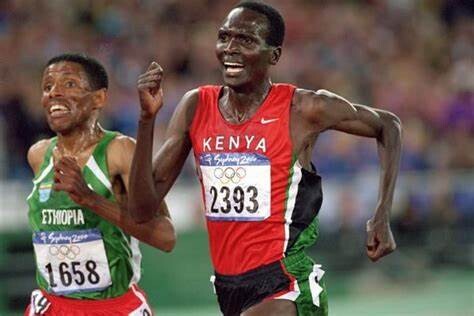
The absence marked the second consecutive time the Commonwealth Games 10,000m bronze medallist missed out on the global showpiece.
Kandie is now poised for a make or break race as he gets back on the road for the first time since his injury.
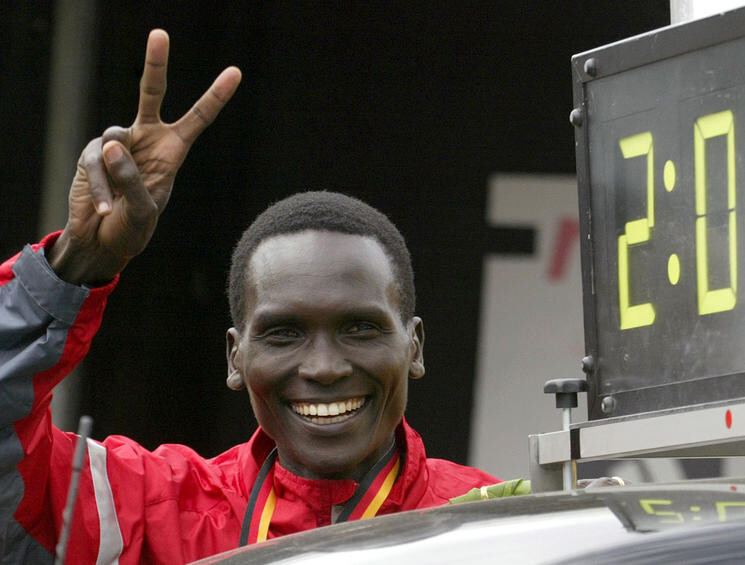
The former world half marathon record holder has revealed he is in good shape, having kept to his training routine with the competition in mind.
“I carried on training knowing that one day there would finally be a race. I stayed in good shape," he told World Athletics.
Kandie is drawing inspiration from his hero and former long distance runner Paul Tergat ahead of his return.
“When I was young, I used to hear everyone saying, Paul Tergat, world records. This has stayed in my mind,” he revealed.
“He became a kind of role model and I used to think when I grow up I would like to be like him, I would like to run like him, I would like to do the things he has done. He still inspires me, he’s still a role model for me. The work that I am doing is because of him. I feel I can’t let him down.”
The Kenyan is one of only seven men to ever complete a half marathon in under 58 minutes, with his personal best of 57:32. He won the Valencia half marathon three times, including when he set the world record in 2020.
(09/28/24) Views: 139Stephen Awino
Get trail-strong with these tips from a pro
Pro trail runner and coach Hannah Allgood shares four exercises that target common weaknesses in runners.
If you want to be a strong trail runner, you’ll need more than just miles on your legs—you need to build strength that can take on the rugged terrain. Hannah Allgood, a Colorado-based pro trail runner for Dynafit, is here to help, sharing her four favourite exercises for athletes.
Allgood not only excels in the mountains (in July, she won the Eiger Ultra-Trail by UTMB 100K), but also helps athletes build strength through her coaching with Freetrail, an online trail community and media outlet. With a background in exercise science and years of competitive experience across multiple sports, she has perfected the art of staying strong, fast and injury-free on the trails. “Strength training has always been an integral part of my career as an athlete,” Allgood explains. She knows firsthand how crucial lifting is to boost performance and prevent injuries, especially for trail runners tackling challenging mountain races.If you want to be a strong trail runner, you’ll need more than just miles on your legs—you need to build strength that can take on the rugged terrain. Hannah Allgood, a Colorado-based pro trail runner for Dynafit, is here to help, sharing her four favourite exercises for athletes.
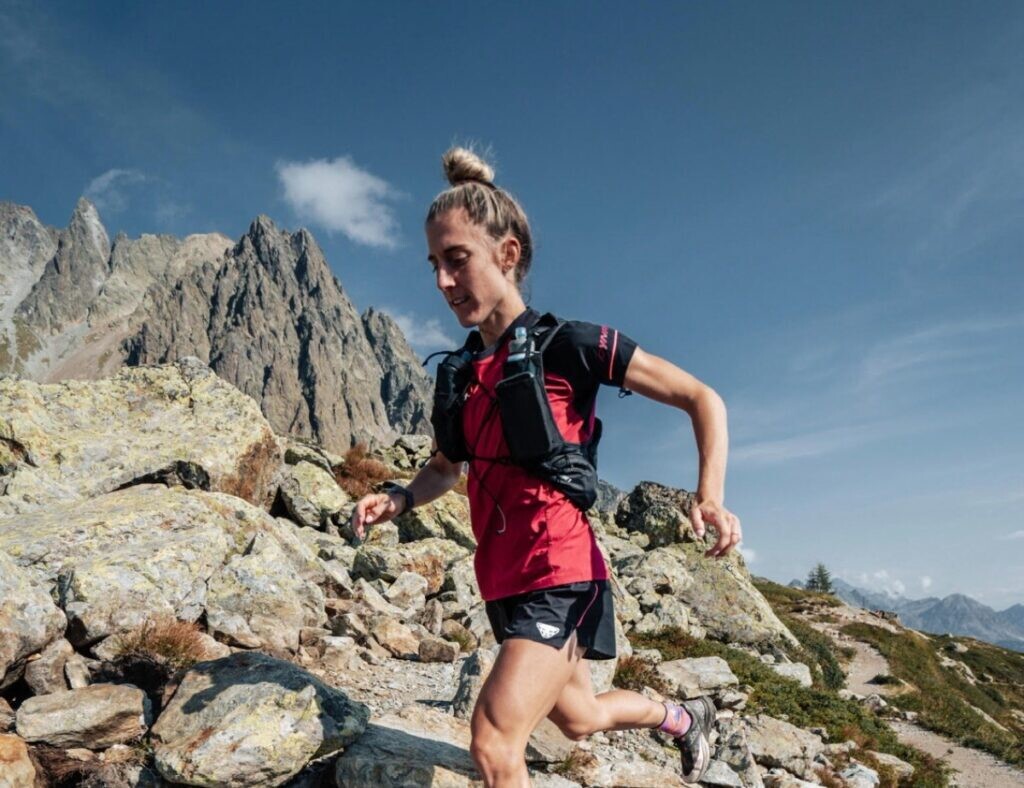
Allgood not only excels in the mountains (in July, she won the Eiger Ultra-Trail by UTMB 100K), but also helps athletes build strength through her coaching with Freetrail, an online trail community and media outlet. With a background in exercise science and years of competitive experience across multiple sports, she has perfected the art of staying strong, fast and injury-free on the trails.
“Strength training has always been an integral part of my career as an athlete,” Allgood explains. She knows firsthand how crucial lifting is to boost performance and prevent injuries, especially for trail runners tackling challenging mountain races.
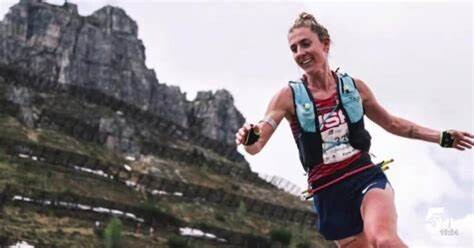
If you want to be a strong trail runner, you’ll need more than just miles on your legs—you need to build strength that can take on the rugged terrain. Hannah Allgood, a Colorado-based pro trail runner for Dynafit, is here to help, sharing her four favourite exercises for athletes.
Allgood not only excels in the mountains (in July, she won the Eiger Ultra-Trail by UTMB 100K), but also helps athletes build strength through her coaching with Freetrail, an online trail community and media outlet. With a background in exercise science and years of competitive experience across multiple sports, she has perfected the art of staying strong, fast and injury-free on the trails. “Strength training has always been an integral part of my career as an athlete,” Allgood explains. She knows firsthand how crucial lifting is to boost performance and prevent injuries, especially for trail runners tackling challenging mountain races.
Step-ups
Allgood suggests varying the height of your step to 12-18 inches, based on your height and current strength. “Step-ups are a great exercise because they allow for versatility to match the athlete’s needs (weight or no weight, increase or decrease height, increase speed or decrease speed),” Allgood explains. “They help with not only strength on trails but functional day-to-day strength.”
Single-leg Romanian deadlift (with a cable or band, OR with weight)
“This exercise targets many different systems,” says Allgood. “The RDL changes your centre of mass, therefore working on your balance and coordination, which are highly beneficial for trail running. The row helps with rotational core stability, which is also vital for running, as it helps with balance and control across various terrains and helps with efficient force transfers from upper to lower body.”
Bulgarian Split Squat
Allgood explains that the Bulgarian split squat is another unilateral exercise that helps improve balance and core stability by using weights. “This move is also very helpful for improving leg power, which translates to improved force production, meaning you can get up the mountains faster.” She suggests adding in a soleus raise for an extra challenge.
Modified side plank with clamshells or hip abduction
“This is one of my favourite go-to glute exercises that also incorporates core stability,” Allgood says. “Adding a band around your knees will increase the challenge!”
If you’re adding strength training during your racing season, Allgood suggests focusing on 12-15 reps per set, aiming for two to three sets. “This will help build strength, but also not leave you too sore for running or other fun activities,” she says. “Strength training two to three times a week can be huge for your overall health and with preventing injuries.”
(09/28/24) Views: 123
Keeley Milne
Is FKT Fever Coming to the Himalayas?
American runner Tyler Andrews just set the speed record on Manaslu, running from base camp to the summit while using an ultralight setup. Will more runners flock to the world’s highest peaks to prove themselves?
On September 19, 34-year-old American mountain runner Tyler Andrews ascended Nepal’s 26,781-foot Manaslu in a mind-bending 9 hours and 52 minutes. The time shaved more than two hours off the previous speed record on the peak, set in 2023 by Nepalese climber Pembe Gelji Sherpa. Before that, Francois Cazzanelli, an alpinist and guide from Italy, summited in 13 hours, in 2019.
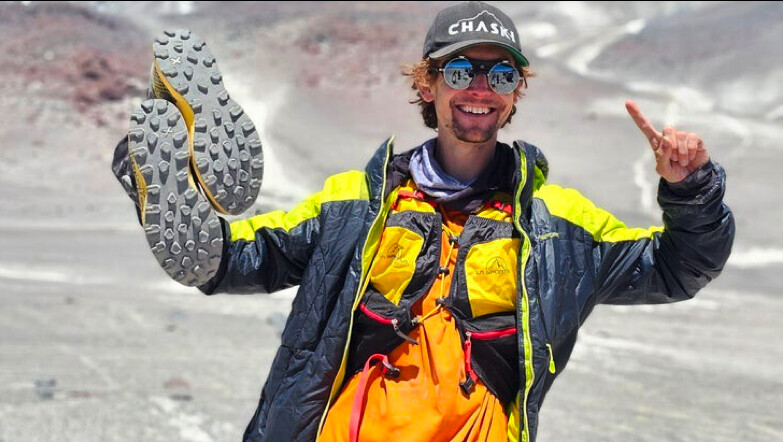

Manaslu is one of the world’s 14 peaks above 8,000 meters. These mountains have traditionally been the realm of mountaineers and professional high-alpine guides, not trail runners.
But Andrews believes that’s about to change. “I think we’re going to start seeing more mountain runners going this way,” Andrews told Outside from Manaslu base camp.
His belief stems in part from his own experience on the peak, and from changing dynamics he’s seeing in the world of ultrarunning and the pursuit of fastest known times. Andrews is part of a new generation of mountain runners seeking out increasingly bigger, more challenging, and more daunting speed records. “If you start with the Colorado fourteeners, then go to the Alps, then the Andes, the natural progression is to the Himalayas and the 8000ers,” he told Outside.
Instead, ascents on Nepal’s highest mountains, including those resulting in speed records, have historically been tracked by the Himalayan Database. But that’s changing, and Andrews is one reason behind the shift. He actually works part-time for Fastest Know Time as Regional Editor for Latin America and the Himalayas. Part of his job is to create routes and then help FKT track records on them.
“I think in the past, the team didn’t want to be trying to verify routes that required rock climbing because you can’t just use a GPS watch to track something that’s vertical,” Andrews says. “But Manaslu is not like that, so tracking it is really no different than other mountains on there, like Cotopaxi or Denali.”
When Andrews returns from Manaslu base camp—he’s currently supporting a friend attempting a ski descent—he will submit his GPX data to Fastest Known Time for approval. He also plans to submit his data to the Himalayan Database.
Manaslu and 26,864-foot Cho Oyu in Tibet are considered the easiest of the 14 8,000-meter peaks. On Manaslu, the nine-mile route from base camp to the summit requires less technical climbing than harder peaks, like K2 or Nanga Parbat. Still, Manaslu isn’t easy. The trail gains nearly 11,000 feet of elevation, requires the use of fixed ropes in many sections, and travels over steep sections of snow and ice. Climbers must also survive in what mountaineers call the “Death Zone”—elevations above 26,000—because there’s not enough oxygen for human beings to survive more than a day or two.
Andrews ran up Manaslu without using supplemental oxygen, and he did so with an extremely lightweight setup. He wore a pair of waterproof trail running shoes designed to shed snow, a puffy jacket, lightweight pants, and a windbreaker. He carried a 30-liter backpack containing bare essentials: harness, helmet, goggles, ice axe, water, snacks, and energy gels.
In 2013 he ran straight up 15,780-foot Mont Blanc, typically a two-day mountaineering ascent, in less than 5 hours while wearing shorts and a t-shirt. In 2017 he ascended Mount Everest twice in the same week.
Jornet’s ascents prompted some trail runners to take on similar challenges, setting off a flurry of mountain-top FKTs, and inspiring a new generation of endurance athletes.
Similarly, Andrews thinks the time is right for athletes to “push back on some of the conventional wisdom” for ascending 8,000-meter peaks. Instead of ascending Manaslu overnight, as is typical (“so you don’t get roasted by the sun”), Andrews did it mostly during daylight, which allowed him to use more conventional footwear, due to the warm temperatures.
Andrews also brought a stationary bike to base camp, which he said was “absurd.” But the device enabled him to get his heart rate higher than he would have while running.
But Andrews cautions that Himalayan ascents aren’t for untested trail runners. “I didn’t just step off the track and onto an 8,000-meter mountain,” he says. Andrews has been mountaineering for 15 years, and much more seriously in the last five. In recent years he’s ascended 22,841-foot Aconcagua in Argentina, 19,347-foot Cotopaxi in Ecuador, and 22,349-foot Ama Dablam in Nepal, among other peaks.
He lives and trains at high altitude, splitting time between Flagstaff, Arizona and Quito, Ecuador. And Andrews has extensive experience running at higher altitudes in the Andes.
Prior to Manaslu, Andrews ran dozens of trails above 16,000 feet in the Himalayas. His FKT on Manaslu was his second attempt on the mountain in two years. He didn’t summit the first time. “I got my ass kicked,” Andrews says. “But I learned a lot.” Both times, he hired expert local outfitter Dawa Steven Sherpa of Asian Trekking to manage logistics.
For 2025 and beyond, Andrews hopes to add more Nepali trails to the Fastest Known Times database. “There’s an absolute smorgasbord of mountain trail running here,” he says. “Really epic beautiful routes that most people do in a few days to a few weeks that
(09/28/24) Views: 115Outside Online
Mengesha and Ketema claim Berlin Marathon crowns
Milkesa Mengesha and Tigist Ketema achieved an Ethiopian double at the BMW Berlin Marathon, a World Athletics Platinum Label road race, on Sunday (29).
Racing at the 50th edition of the event, held on a sunny morning in Germany’s capital, Mengesha kicked away from Cybrian Kotut in the closing stages to win the men’s title in a PB of 2:03:17, while Ketema solo ran her way to a 2:16:42 triumph in the women’s race.

Kenya’s Kotut finished five seconds behind Mengesha, securing second place in 2:03:22, with Ethiopia’s Haymanot Alew third in 2:03:31. Ketema led an Ethiopian top four in the women’s race, winning by more than two minutes ahead of her compatriots Mestawut Fikir (2:18:48), Bosena Mulatie (2:19:00) and Aberu Ayana (2:20:20).
After a fast start Mengesha, who finished sixth in the World Championships marathon last year, was part of a lead group of 11 that followed the pacemakers through the halfway mark still on sub-2:02 pace, in 1:00:57.
Kenya’s former world half marathon record-holder Kibiwott Kandie was to the fore as the pacemakers stepped aside just after 25km. The group had reduced to eight and was bunched together by the time 30km was reached in 1:27:21, and seven were still in contention – including Ethiopia’s Tadese Takele, the fastest man in the field – as they passed the 35km mark in 1:42:14.
Kandie, Takele and Ethiopia’s Dejene Megersa couldn’t hold on and the race was down to Mengesha, Kotut, Kenya’s Stephen Kiprop and Alew with around 5km to go. They reached the 40km mark in 1:56:59 before Mengesha and Kotut strode ahead.
Mengesha dropped his rival with the Brandenburg Gate finish line in sight, crossing it to win in 2:03:17, the third fastest time in the world so far this year and a PB that improves the previous best he set in Valencia in 2022 by more than two minutes.
He dropped to his knees and was followed over the finish line by Kotut in 2:03:22, also a PB by more than a minute.
Ketema was a dominant winner of the women’s race. The 26-year-old, who ran 2:16:07 when making her marathon debut in Dubai in January, is a training partner of Tigist Assefa, who set a world record of 2:11:53 when winning in Berlin last year.
This time Ketema was in control and she was joined by her compatriot Azmera Gebru and a group of men’s race runners as 5km was reached in 16:06 and 10km in 32:14.
Ketema was 12 seconds ahead at halfway, which she hit in 1:07:53, and she only increased her advantage from there. She reached 30km in 1:36:59, by which point Gebru had been overtaken, with Ketema’s closest challengers being Mulatie, Fikir and Ayana who were running together 1 minute and 53 seconds back.
Ketema continued to forge ahead and she reached 40km in 2:09:24, with a gap of 2 minutes and 20 seconds. While Fikir closed slightly, Ketema was well clear and she won in 2:16:42, the third fastest time in the women’s race at the Berlin Marathon.
Fikir was second in 2:18:48, a PB by almost two minutes, while Mulatie was third in 2:19:00, taking almost eight minutes off her previous best set on her debut in Houston in January.
(09/29/24) Views: 114Ketema and Takele head entries for 50th Berlin Marathon
Ethiopia’s Tigist Ketema and Tadese Takele start as the fastest in the fields and will be hoping to lead the way when they line up for the BMW Berlin Marathon, a World Athletics Platinum Label road race, on Sunday (29).
Ketema, previously better known as an 800m and 1500m specialist, made her mark in the marathon in Dubai in January as she ran 2:16:07, a time that places her ninth on the women’s world marathon all-time list. She then ran 2:23:21 to place seventh in London in April and Berlin will be her first race since then.
“I have prepared for a personal best and plan to run the first half on Sunday in around 68 minutes,” she said. “I hope it won't be too cold because I prefer to run in slightly warmer weather.”
Ketema is one of three women with sub-2:20 PBs on the entry list, as her competition includes her compatriots Genzebe Dibaba and Yebrugal Melese, who have respective PBs of 2:18:05 and 2:19:36.
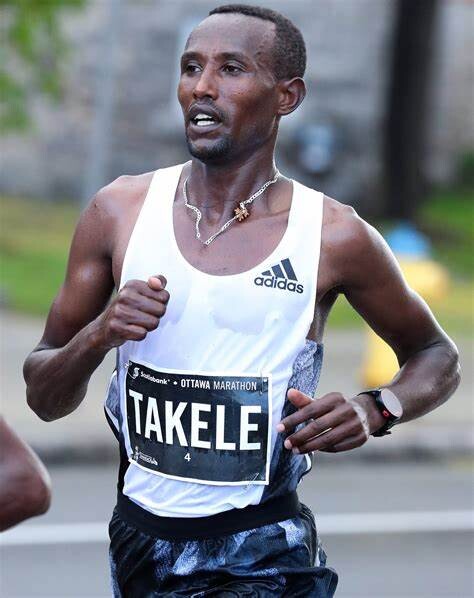
Dibaba ran that PB on her debut in Amsterdam in 2022 and she clocked 2:21:47 in Chicago a year later. “I saw Haile Gebrselassie run two world records in Berlin on TV and since then I've always wanted to run in Berlin,” she said. “Now the time has come. It would be a success for me if I ran a personal best.”
Another eight women on the entry list have dipped under 2:22 for the marathon in their careers so far, including Mestawot Fikir (2:20:45), Azmera Gebru (2:20:48), Sisay Gola (2:20:50), Fikrte Wereta (2:21:32) and Aberu Ayana (2:21:54), as well as Japan’s Mizuki Matsuda (2:20:52) and Ai Hosoda (2:21:42).
Germany’s Melat Kejeta is also part of that group, having clocked 2:21:47 in Dubai in January. She placed sixth at the Tokyo Olympics but was unable to finish the Olympic marathon in Paris due to stomach problems.
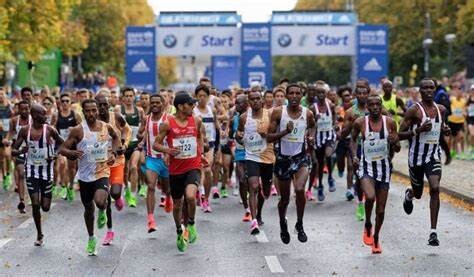
A total of 13 world records have so far been set in the Berlin Marathon, the most recent being the 2:11:53 by Tigist Assefa – a training partner of Ketema – in last year’s women’s race.
The men’s title on that occasion was won by Eliud Kipchoge, as he claimed a record fifth victory.
Kipchoge does not return this year but Takele does, following his third-place finish in last year’s race in a PB of 2:03:24. That was his most recent race due to injury, but he says he is now fit and ready to run. “I’ve trained very well,” he said, “and expect to run a strong race.”
Another four men to have dipped under 2:05 feature on the entry list, including Kenya’s Cybrian Kotut, who ran his PB of 2:04:34 when finishing second in Amsterdam last year, and Ethiopia’s Hailemaryam Kiros and Bazezew Asmare, who respectively clocked 2:04:41 in Paris in 2021 and 2:04:57 in Amsterdam in 2022.
Kenya’s former world half marathon record-holder Kibiwott Kandie races the marathon for the third time and will be looking to build on the PB of 2:04:48 he set in Valencia last year as he hunts for a first win over the distance.
They will be joined by athletes including Kenya’s Samwel Mailu, the world half marathon bronze medallist who set a course record of 2:05:08 to win the Vienna City Marathon last year and continues his comeback after injury, and Ethiopia’s Milkesa Mengesha, who finished sixth at the World Championships last year and has a best of 2:05:29.
Elite fields
Women
Tigist Ketema (ETH) 2:16:07
Genzebe Dibaba (ETH) 2:18:05
Yebrugal Melese (ETH) 2:19:36
Mestawot Fikir (ETH) 2:20:45
Azmera Gebru (ETH) 2:20:48
Sisay Gola (ETH) 2:20:50
Mizuki Matsuda (JPN) 2:20:52
Fikrte Wereta (ETH) 2:21:32
Ai Hosoda (JPN) 2:21:42
Melat Kejeta (GER) 2:21:47
Aberu Ayana (ETH) 2:21:54
Calli Hauger-Thackery (GBR) 2:22:17
Bekelech Gudeta (ETH) 2:22:54
Lisa Weightman (AUS) 2:23:15
Betelihem Afenigus (ETH) 2:23:20
Veronica Maina (KEN) 2:24:46
Bosena Mulatie (ETH) 2:26:59
Alisa Vainio (FIN) 2:27:26
Sonia Samuels (GBR) 2:28:04
Nora Szabo (HUN) 2:28:25
Philippa Bowden (USA) 2:29:14
Pauline Esikon (KEN) debut
Men
Tadese Takele (ETH) 2:03:24
Cybrian Kotut (KEN) 2:04:34
Hailemaryam Kiros (ETH) 2:04:41
Kibiwott Kandie (KEN) 2:04:48
Bazezew Asmare (ETH) 2:04:57
Samwel Mailu (KEN) 2:05:08
Milkesa Mengesha (ETH) 2:05:29
Haymanot Alew (ETH) 2:05:30
Philimon Kipchumba (KEN) 2:05:35
Josphat Boit (KEN) 2:05:42
Dejene Megersa (ETH) 2:05:42
Enock Onchari (KEN) 2:05:47
Oqbe Ruesom (ERI) 2:05:51
Justus Kangogo (KEN) 2:05:57
Haimro Alame (ISR) 2:06:04
Ashenafi Moges (ETH) 2:06:12
Asbel Rutto (KEN) 2:07:04
Samuel Tsegay (SWE) 2:06:53
Yohei Ikeda (JPN) 2:06:53
Stephen Kiprop (KEN) 2:07:04
Hendrik Pfeiffer (GER) 2:07:14
Kento Kikutani (JPN) 2:07:26
Melaku Belachew (ETH) 2:07:28
Godadaw Belachew (ISR) 2:07:45Y
uhei Urano (JPN) 2:07:52
Guojian Dong (CHN) 2:08:12
Filimon Abraham (GER) 2:08:22
Haftom Welday (GER) 2:08:24
Sebastian Hendel (GER) 2:08:51
Olonbayar Jamsran (MGL) 2:08:58
Haftamu Gebresilase (ETH) debut
(09/27/24) Views: 112World athletics
Emma Bates will return for the 2024 Bank of America Chicago Marathon
American marathoner Emma Bates will return for the 2024 Bank of America Chicago Marathon after finishing 13th in last year's race.
Bates finished 13th in last year's Chicago Marathon, running 2:25:04. However, she partially tore her plantar fascia in the process of that race, setting her back and forcing her to withdraw from the U.S. Olympic Trials in February.
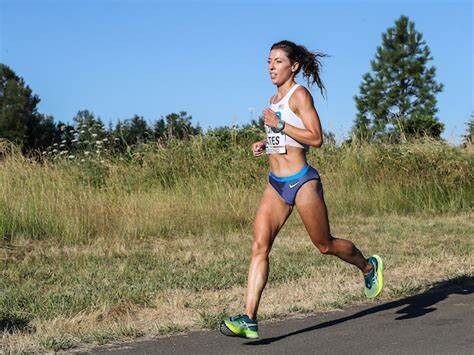
Bates' bounceback from her plantar fascia tear has been solid. She's run one race since then, finishing 12th in the 2024 Boston Marathon in April. She ran 2:27:14 and finished as the top American in the race.
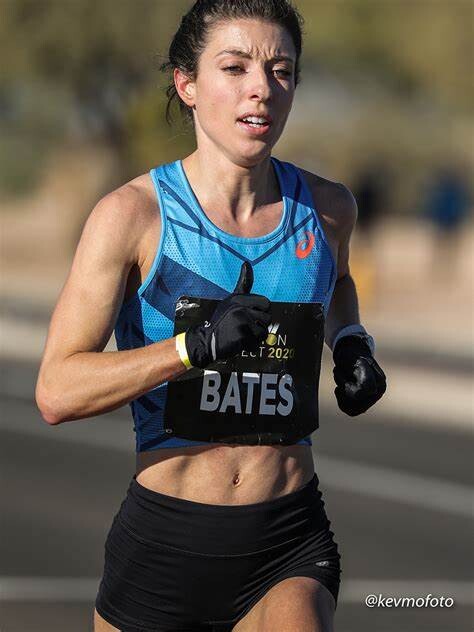
This will be Bates' fourth Chicago Marathon of her career. She finished fourth in 2019, running 2:28:19. In 2021, she finished second, running 2:24:20.
Her marathon best comes from the 2023 Boston Marathon, where she ran 2:22:10; Bates is the second-fastest woman in Boston Marathon history.
(09/27/24) Views: 110NBC Sports Chicago Staff
Defending champion breaks course record to win Loch Ness Marathon in Inverness
Moray Pryde became the fastest ever champion in the history of the Loch Ness Marathon as he set a new course record to successfully defend his title.
The 29-year-old from Broxburn retained his crown as he claimed victory in a time of two hours 19 minutes and 26 seconds.
The Lothian Running Club athlete broke the course record by 47 seconds which was previously 2:20:13 by Simon Tanui from Kenya back in 2009.

Inverness athlete Shaun Cumming, representing both Highland Hill Runners and East Sutherland Athletics Club, was in second place in a time of 2:31:15 with Tom Charles from Chorlton Runners in third place with 2:31:58.
Pryde won the 2023 Loch Ness Marathon in a time of 2:22:08 and in May also claimed victory in the Edinburgh Marathon winning in a time of 2:23:14.
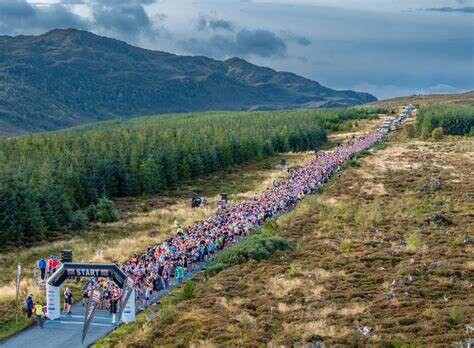
Pryde says it was ideal conditions for racing, and was proud to break the course record which he was confident he could target after setting a quick pace early on.
He said: “Three of us went out for the first five miles and then someone dropped off.
“We flew through the first 10 miles, but at mile 14 Tom had dropped off, and then from mile 14 to the finish I didn’t really look behind me. I was chasing a car for 12 miles.
“I dropped bang where I wanted to be at a sub 2:20 pace and it was squeaky bum time from there until the end to make sure to get some time back.
“It was a nice feeling on the final straight and everything went to plan.”
Speaking about breaking the record, Pryde said: “I thought it was on after 2:22 last year. It was three minutes this time so we will see what we can do next time.
“I have been fortunate as the racing has been going my way and hopefully I can keep that luck going. I used to play football three times a week but stopped doing that. Lothian Running Club have given me a lot of support and long
was delighted to move up a place from finishing in third last year to take second this year. He managed to catch Charles in the final straight of the race to claim the silver medal.
“I didn’t know until the last half mile that I was close to second place,” he said.
“He looked like that he was flagging and I was in the position to take him.
“There was a battle in the first half of the race where I hung back and worked together with others. After Dores we managed to pull away and at half way there was about five or six of us.
“It is nice to be on the podium, I looked around at the start of the race and I thought it would be a well earned place, so to get second I am happy with that.”
(09/30/24) Views: 100Will Clark


